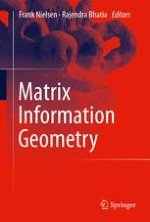2013 | OriginalPaper | Buchkapitel
16. Learning Mixtures by Simplifying Kernel Density Estimators
verfasst von : Olivier Schwander, Frank Nielsen
Erschienen in: Matrix Information Geometry
Verlag: Springer Berlin Heidelberg
Aktivieren Sie unsere intelligente Suche, um passende Fachinhalte oder Patente zu finden.
Wählen Sie Textabschnitte aus um mit Künstlicher Intelligenz passenden Patente zu finden. powered by
Markieren Sie Textabschnitte, um KI-gestützt weitere passende Inhalte zu finden. powered by
